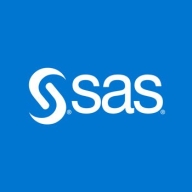

Find out what your peers are saying about BMC, Broadcom, Redwood Software and others in Workload Automation.

AWS Step Functions enables orchestration of complex workflows, parallel task execution, and seamless integration with AWS services, simplifying ETL automation and data pipeline management.
With AWS Step Functions, developers streamline task automation and ensure smooth microservices orchestration. It simplifies development and manages interdependencies, validates data, and integrates AWS services for cost-effective workflows. It offers a user-friendly graphical interface for creating pipelines, scalable parallelization via the "map" state, control over historical events, and visualization with JSON. Enhanced by a dashboard-like view, it aids in visual workflows and debugging.
What are the most valuable features?
What are the benefits and ROI to look for?
In specific industries such as finance, healthcare, and e-commerce, enterprises implement AWS Step Functions to manage data pipelines, orchestrate microservices, and automate complex ETL jobs. They benefit from seamless integration with AWS services, enhanced data validation, and streamlined development, resulting in efficient and cost-effective workflows tailored to their operational needs.
SAS Workload Management optimizes resource allocation, streamlines workloads, and enhances operational efficiency with strong data processing capabilities and real-time monitoring, ensuring seamless task execution and balanced server loads.
Known for its robust scalability and efficient resource allocation, SAS Workload Management is designed to enhance performance and provide detailed analytics. Its real-time monitoring and comprehensive scheduling features support critical decision-making processes and reduce downtime. Businesses appreciate its ease of use and intuitive features, though some users note a need for better documentation and simpler configurations. Occasional slow performance and cumbersome initial setup are also mentioned, alongside desires for more intuitive reporting and improved automation capabilities. Complicated error messages and limited integration support present further challenges.
What are the key features of SAS Workload Management?Industries implementing SAS Workload Management include finance, healthcare, and retail to manage extensive data processing needs. Finance sectors use it to ensure compliance and risk management, healthcare organizations apply it for patient data handling and optimization, while retail businesses leverage it for inventory and customer data management, ensuring seamless operations across platforms.
We monitor all Workload Automation reviews to prevent fraudulent reviews and keep review quality high. We do not post reviews by company employees or direct competitors. We validate each review for authenticity via cross-reference with LinkedIn, and personal follow-up with the reviewer when necessary.